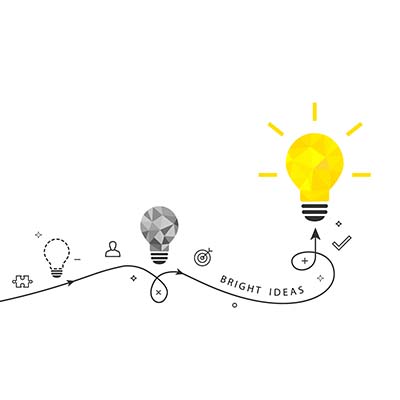In the fiercely competitive business landscape, staying ahead is not merely advantageous but imperative. The disparity between tech-savvy companies and those grappling to keep pace has become more evident than ever. In this blog post, we delve into the distinct contrast between businesses aligned with technology trends and those falling behind. The gap is substantial, and, spoiler alert, it’s not a close race. At SRS Networks, we grasp the pivotal role technology plays in business success. Our mission is to assist you in bridging this gap, ensuring your business remains at the forefront of technological evolution. Embracing cutting-edge solutions is not just a strategy; it’s a necessity for sustained competitiveness in today’s dynamic business environment. Trust SRS Networks to be your partner in navigating the ever-evolving tech landscape, propelling your business towards lasting success. The Tale of Two Businesses Business A: The Tech Titan Business A is the embodiment of a Tech Titan. They invest in the latest technologies, stay abreast of industry trends, and leverage digital innovations to streamline operations, enhance customer experiences, and drive growth. Here’s a glimpse into what sets them apart: Efficient Operations: Automated processes, cloud solutions, and advanced software ensure that every aspect of their operations runs smoothly and efficiently. Data-Driven Decision-Making: Business A harnesses the power of data analytics to make informed decisions, identify trends, and stay agile in a dynamic market. Robust Cybersecurity: With cutting-edge cybersecurity measures in place, Business A safeguards sensitive information, building trust with clients and partners. Agile Adaptation: Tech Titans like Business A readily embrace change. They adopt new technologies swiftly, positioning themselves as industry leaders. Business B: The Tech Struggler On the flip side, we have Business B – the Tech Struggler. This business, whether due to budget constraints, resistance to change, or a lack of tech expertise, falls behind in the technology race. Here’s a snapshot of their struggles: Manual Processes: Business B relies heavily on manual processes, leading to inefficiencies, errors, and a significant drain on resources. Data Blindness: Without the power of data analytics, Business B struggles to gain insights, often making decisions based on gut feelings rather than informed data. Cybersecurity Vulnerabilities: The absence of robust cybersecurity measures exposes Business B to potential data breaches, damaging their reputation and client trust. Resistance to Change: Business B hesitates to adopt new technologies, fearing disruption. This reluctance leaves them trailing behind competitors who embrace innovation. The Unseen Gap While the gap between these two businesses may not be immediately visible, it becomes increasingly apparent over time. Here’s what the unseen gap entails: 1. Competitive Edge: Tech Titans enjoy a significant competitive edge, offering better products, services, and customer experiences, ultimately attracting and retaining a larger client base. 2. Operational Efficiency: Business A operates with heightened efficiency, reducing costs and maximizing productivity. Meanwhile, Business B struggles with inefficiencies that impact their bottom line. 3. Innovation and Growth: Tech Titans consistently innovate and grow, positioning themselves as industry leaders. Business B, on the other hand, risks stagnation and falling behind in a rapidly evolving market. 4. Adaptability to Change: Business A adapts seamlessly to change, positioning themselves to capitalize on emerging opportunities. Business B, resistant to change, faces challenges in keeping up with market shifts. Bridging the Gap with SRS Networks At SRS Networks, we understand the transformative […]
When we think of resilience in the tech world, Nokia phones often come to mind. Renowned for their durability, Nokia devices have survived everything from drops to spills. It begs the question – is your technology as tough as a Nokia phone? At SRS Networks, we’re putting our own technology to the test with a metaphorical drop-test on our computers. Let’s explore the importance of resilience in the digital realm and how partnering with SRS Networks ensures that your technology stands up to the challenges it may face. The Nokia Resilience Legacy: Lessons in Durability: Surviving Drops: Nokia phones have famously survived falls from considerable heights, showcasing their robust build. Water-Resistant Design: Many Nokia devices boast water-resistant features, proving their resilience against unexpected spills. Longevity and Reliability: Nokia’s reputation is built on the longevity and reliability of its devices, enduring the test of time. The Digital Drop-Test by SRS Networks: Ensuring Your Technology’s Toughness: Robust Cybersecurity Measures: We implement resilient cybersecurity strategies to protect your digital assets from potential threats and breaches. Data Backup and Recovery Plans: In the event of a digital “drop,” our data backup and recovery plans ensure that your critical information remains intact. Proactive Maintenance: Just like Nokia’s reliability, we believe in proactive maintenance to prevent technology hiccups before they become major issues. Partnering with SRS Networks for Digital Resilience: Comprehensive Tech Resilience Plans: Our team develops customized resilience plans to address the unique needs and challenges of your business. 24/7 Support: With round-the-clock support, we’re always here to ensure that your technology remains resilient and operational. Future-Proofing Strategies: Anticipating future challenges, we implement strategies to future-proof your technology and keep it ahead of the curve. In a world where digital resilience is paramount, SRS Networks stands out as your partner in ensuring that your technology can withstand the metaphorical drop-tests of the digital landscape. Just like Nokia phones, we believe in building technology that endures, survives, and remains operational despite the challenges it may face. Ready to test your technology’s toughness? Partner with SRS Networks, and let’s ensure your digital assets can stand up to the rigors of the digital world.
We might place the onus on business technology solutions on this blog, but once in a while we like to talk about technology that is just plain cool. Today is one of those days. With this new wearable utilizing artificial intelligence technology, you can monitor your health, making for a very interesting application of the technology.
Attorneys have a very specific job. They are facilitators, and require that they have access to information and the latest tools to be as efficient as possible. Not only does this allow them to make more money and honor more responsibilities, it helps them to provide the comprehensive legal services their clients demand.
When the minds that gave birth to classic science fiction technology first introduced it to the world, there was no way they could have seen a future where their ideas could be considered a reality. However, the ideas introduced in pop culture have inspired the brains of today to achieve great, and sometimes bizarre, things with technology.
Moore’s law has been prophetic, but nothing lasts forever. When Gordon Moore predicted that transistors inside of a dense integrated circuit would double every 18 months in 1965, it seemed like a very aggressive prediction. 57 years later, it has come to pass, with computing speeds doubling every year and a half. Now, it seems like the tried and true prediction is coming to a close, so we thought we’d look at how technology will continue growing when Moore’s law actually becomes obsolete.
It’s fun to fantasize about the future of business, but what kind of technology can we realistically expect to make a difference in the way ordinary businesses function? Today, we hope to answer this question by examining three emerging technologies we think might make a splash in the business environment moving forward.
Digital transformation—or the integration of digital technology into all aspects of operations—has been a hot topic of consideration for businesses of all sizes. Let’s consider how you should approach your transformative processes as you work to keep your business competitive with those who are also embracing technology.
There are only a few major smartphone manufacturers as the technology needed to make (and distribute) them takes a lot of capital. These major manufacturers are mostly from Asia, but have parts made in different locations all over the world. The modern smartphone features near-ubiquitous connectivity, desktop-like processing power, and enough storage to facilitate the millions of applications that are constantly being developed for the two main OSs. The best ones feature mics and speakers that are protected from water and sand, multiple cameras that are capable of 4K video, and batteries that only slowly degrade and can be active for half-a-day on a single charge. What’s worse, these manufacturers are doing it at a time when the devices they’ve created last a few sales cycles and result in their margins noticeably shrinking. This has created less competition at the top of the market, with more people using devices manufactured by a limited amount of companies. Smartphone Markets A brief look at the global smartphone market will show you that there are now only six manufacturers with a market share of eight percent or more. They are Samsung, Apple, Huawei, Xiaomi, Oppo, and Vivo. Most of these manufacturers service emerging or Asian markets, while Apple and Samsung are the only truly global brands. In the United States, Apple is the largest distributor of smartphones with a 41 percent market share, with only Korean manufacturers Samsung (21 percent) and LG (13 percent) holding more than 10 percent of the market. Things are basically the same in much of the English-speaking world. In the UK and Australia, Apple comes in with 49 percent and 55 percent of the market share, respectively. Samsung is a distant second with 29 percent and 22 percent, respectively. In mainland Europe, however, Samsung’s market share is nearly twice Apple’s. Overall there are over 1.5 billion smartphones shipped every year for a market that is now at nearly three billion people. 82 percent of people in the UK and 77 percent of Americans own one. Predictably, China is actually the largest smartphone market with nearly 800 million smartphone owners. Conversely, there are some places where smartphone adoption hasn’t reached high percentages. Despite having nearly 1.4 billion people, the smartphone ownership rate in India is only around 28 percent. Other potential growth markets include Indonesia (27 percent), Pakistan (14 percent), and several coastal African nations (6-to-13 percent). Innovation of the Modern Smartphone Steve Jobs is roundly credited as the “inventor” of the smartphone. Whether this is true or not is up for debate, but people in-the-know about such things say that companies were working on something like this for a decade leading up to the iPhone’s 2007 launch date. Apple’s iPhone was the first smartphone to market, but even though it was only a dozen years ago now, the devices have changed precipitously. Innovation of technology (and of the devices) has been a major driving force in pushing the use of devices. As we stated earlier billions of people actively use (and periodically purchase) smartphones and they are always looking for new ways to use their devices. So while the fundamental technologies found inside these devices have been pretty static, any new tools, and improved specifications show up on all manufacturer flagships eventually. The best phones are no longer […]
Innovation Through IT It’s not a secret that lots of businesses rely on their information technology systems to run their entire business. IT fuels efficient data storage, use of stored data, and collaborative interfacing with said data. Even as that’s happening, businesses have to constantly monitor and maintain their IT systems. After all, if you depend on technology, and the technology goes down, your business isn’t going to get anything done. That is why innovations that make technology more reliable, and new tools that turn traditional business resources on its head, are moving business, and society, forward. Since this simple notion has been very difficult to put into practice, thought leaders and industry professionals are now trying to determine how to transform applications and infrastructure architectures, service delivery, DEVOps, production operations, security, and compliance. They are doing this, more than ever, by assessing what is needed and developing solutions. This is leading to the development of new solutions that will take IT out from a support capacity and make it more active in the day-to-day administration of key business tasks. Investment in Cognitive Computing Cognitive computing is the act of using powerful computing resources machine learning and artificial intelligence to continuously process data that is received in the course of doing business. These systems include pattern recognition, language processing, and data mining to create an efficiency that isn’t possible without these technologies. As more information comes in, these technologies are being used to improve the business’ ability to shift their business in ways that can: Enhance business agility by quickening decision making. Be able to consistently scale processes to meet budgetary and operational demands. Improve the overall efficiency and performance of a business. These technologies can also be used to support several different internal and external aspects of your business. They can help build a more robust operational structure, while also automating several of your business’ customer retention initiatives. By investing in the tools needed to create a more effective business, the “smart” business is sure to stay a step ahead of their direct competitors, and in some cases will be able to help the business to explore new avenues of revenue generation. Information Security A data breach can be a really terrible situation for any business, especially when clients’ and employees’ personal information is stolen. Today, threats are numerous and consistent, so technologies have been developed to help organizations weed out threats. There are several innovative tools designed to improve an organization’s data security initiatives. Many of these tools also use machine learning and artificial intelligence to actively adjust a cybersecurity policy to the threats the individual business faces. Since both sides have access to these tools, it becomes essential that companies get proficient at identifying the risks that their essential information systems present. These include: Remote access – With many businesses using workers that access data and applications from outside of their network, security solutions need to be able to secure these connections. IoT – With most businesses having dozens of unsecured endpoints in the way of IoT devices, having a strategy to keep them from becoming vulnerabilities is important. Regulatory demands – Some businesses have certain regulations they have to comply with and have certain conditions they need to meet in order to do so. Hackers – […]
- 1
- 2







